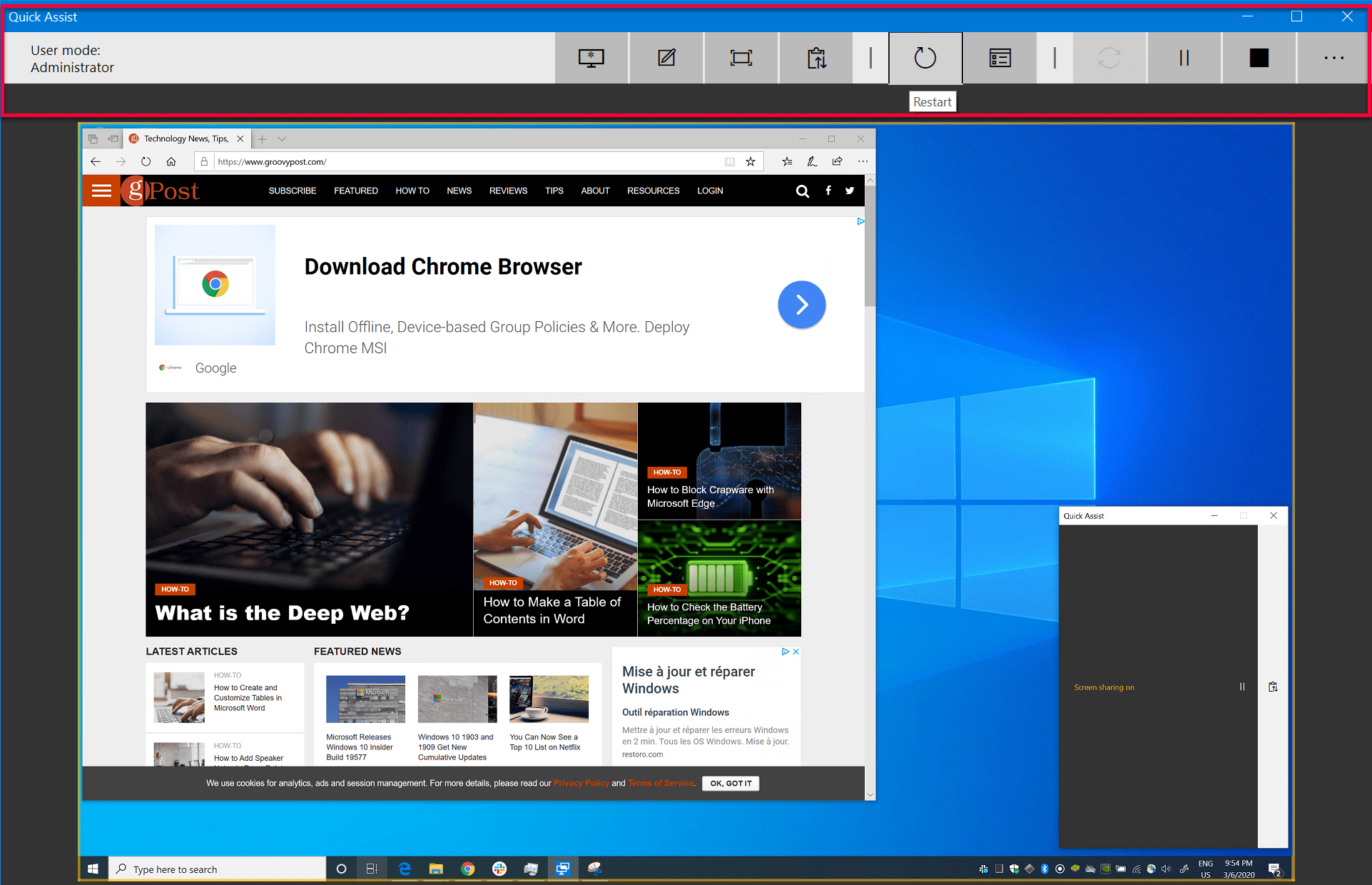What is Quick Assist?
Quick Assist is a built-in remote control application in Windows 10. It has been there since the Anniversary Update (1607) and still, it seems so few know about it. Its executable, quickassist.exe, is found at c:\windows\system32. Easily found in the Windows start menu or search.
Requirements?
The Quick Assist application needs to be started on both sides. It requires both machines to be running Windows 10 and an internet connection. The person helping also requires a Microsoft Account. There is no direct peer to peer connection since both clients connect to the Microsoft cloud. Therefore you don’t need to worry about opening up security on the Windows Firewall for this to work.
How to Start a Quick Assist Session
It is really easy to start and the application will guide you through the process. To start a remote control do the following (Helper is the person who remotes in to help and the Requestor is the person who requests assistance/help):
Connected, Now What?
There are two sharing options, full control or view only. If in full control there are two modes: The Admin toolbar lets the helper do the following (most useful in bold):
Select Monitor – If the remote machine got multiple screens you can select which one to see or switch between.Annotate – Great tool to draw on the screen for the remote part to see.Actual size – Enlarge the window to the actual size of the remote screen.Toggle instructions channel – For longer instructions to the remote user.Restart – Restarts the remote machine.Task Manager – Opens the task manager on the remote machine, a quick way to view the resources used.Pause – Pause/Restart the session.End – Ends the session.
End Remote session
The helper and the requestor can end the session. Close the Quick Assistant window by clicking on the X in the upper right corner or click on the stop button. A message appears saying “Screen sharing has ended”.
Conclusion
Could Quick Assist replace professional third parties remote sessions tools such as TeamViewer, LogMeIn, or Dameware? Quick Assist doesn’t run as a service, and it works with Windows 10 only. It also has some limitations with UAC. I would say it can’t fully replace the professional tools. However, it works perfectly if you want to remote support or help friends and family on Windows 10. You know it’s always there and no firewall reconfiguration or other prerequisites are needed. And the best part is it’s free. If you have any questions about accessing a user’s session/desktop without a password, join the discussion in our Windows 10 Forum.
![]()









